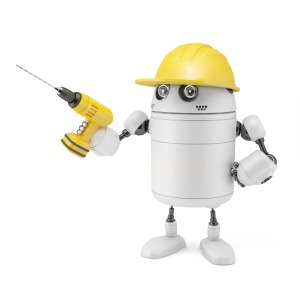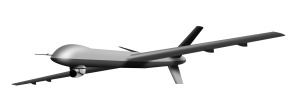Happy New Year to all, I hope that your 2016 is already off to a great start. Looking forward to this year there are some exiting changes as well and continued progress in other areas. Here are some trends we are focusing on for 2016:
- Retailers will continue to seek new solutions and services to empower their stores: in 2015 we started seeing greater efforts and emphasis on the role of brick and mortar stores. Written off as irrelevant, even a burden a few years ago, retailers’ views of their real estate assets has taken a turn. Brick and mortar stores’ role in the retail supply chain will continue to grow in importance. This momentum is due to the evolution of how stores are being leveraged by retailers. Embracing show rooming, leveraging stores as distribution centers, creating contextual experiences within the store to drive traffic to name a few
 trends, are all making stores matter again. Most significantly the redefinition of the store’s role allows traditional retail to tackle the pure eCommerce players. 2016 will continue to see this evolution of the store. Gaining improved inventory visibility, empowering store associates with greater information, enhanced operational data to allow more business processes to be tested and adopted are all areas where retailers will be seeking appropriate solutions. Look for retailers to lean on their solution and service providers to bring them the necessary technology and business processes that can allow retailers to continue to transform their physical assets. Solution and service providers must work with their retail clients to not only provide technology or business process solutions, but to also offer strategic insights and ideas. Technology is not the panacea but the enabler for new ideas and processes.
trends, are all making stores matter again. Most significantly the redefinition of the store’s role allows traditional retail to tackle the pure eCommerce players. 2016 will continue to see this evolution of the store. Gaining improved inventory visibility, empowering store associates with greater information, enhanced operational data to allow more business processes to be tested and adopted are all areas where retailers will be seeking appropriate solutions. Look for retailers to lean on their solution and service providers to bring them the necessary technology and business processes that can allow retailers to continue to transform their physical assets. Solution and service providers must work with their retail clients to not only provide technology or business process solutions, but to also offer strategic insights and ideas. Technology is not the panacea but the enabler for new ideas and processes. - Logistics continues to feel the strain: Your supply chain is only as strong as your ability to minimize the friction associated with moving inventory and products throughout your supply chain. This burden falls on logistics – rail, ocean, air, trucks even bicycles and donkeys are all part of our logistical network. This past holiday season witnessed another situation where the strain on the logistics network can rear its ugly head. eCommerce retailer Jet.com had to apologize to some of their clients for falling short on being able to deliver products in time for Christmas. Logistic giants FedEx and UPS had to jump through some hoops to meet the delivery crush. Coincidentally, over the holidays, eCommerce giant Amazon announced it is exploring adding an air cargo arm to their distribution assets. While eCommerce is growing at a steady 1o-15% year over year since 2012, the strain it is placing on logistics is disproportionate – due in large part to seasonal aspect of certain package delivery. The strain is also starting to pop up in places such as college campus mail rooms where they are being overwhelmed by services such as Amazon Prime. This trend is not going to disappear once the calendar flips to 2016. Transportation and warehousing will continue to feel the strain of keeping up with the accelerated evolution of supply chain in 2016. Look for continued efforts from service and solution providers to work with their customers to continue to find innovate manners to handle the crush of logistics.
- Explosion of disruptive technologies continue to grow: Whether it is IoT (internet of things), robotics, drones, 3d printing or virtual reality to name a few, these disruptive technologies will continue to grow in importance within supply chains. IoT is already well entrenched within manufacturing and logistics, in 2016 look for this technology to grow in importance with regards to the retail supply chain. Robotics are also well know within manufacturing, but look for this technology to play a greater role in places such as customer service and inventory management in retail. Drones are getting much attention, somewhat negative, post holidays as those who unwrapped them as gifts are wondering if they need to register with the FAA, there was even a near disaster during a World Cup skiing race when a drone literally fell from the sky, click here for video. Reality is drones have a role to play in our supply chains – the genie is out of the bottle and properly leveraged they can reduce friction from our supply chains. As
 technology giants Amazon and Google continue to push on how to leverage these machines to address last mile delivery. Additive manufacturing will continue to play a role in the manufacturing process, but will also create new business models. Companies such as Lowes are already experimenting with 3D printers in their stores, allowing customers to have custom products manufactured on site. 3D printing is already playing a significant role with manufacturers such as Airbus and Boeing, but we are only at the cusp of how this disruptive technology will play in our supply chains. Finally virtual reality will continue to play a role in places such as retail – allowing customers to experience product as well as in supply chain design and CAD software. As mentioned above, we see warehousing and other logistics being strained as more companies look to add more of these assets, leveraging virtual reality allows for better testing and understanding of how these capex projects will turn out. Imagine being able to test and try out a full scaled model of a plant or warehouse via virtual reality. Look for these technologies and others continue to grow in importance within our supply chains.
technology giants Amazon and Google continue to push on how to leverage these machines to address last mile delivery. Additive manufacturing will continue to play a role in the manufacturing process, but will also create new business models. Companies such as Lowes are already experimenting with 3D printers in their stores, allowing customers to have custom products manufactured on site. 3D printing is already playing a significant role with manufacturers such as Airbus and Boeing, but we are only at the cusp of how this disruptive technology will play in our supply chains. Finally virtual reality will continue to play a role in places such as retail – allowing customers to experience product as well as in supply chain design and CAD software. As mentioned above, we see warehousing and other logistics being strained as more companies look to add more of these assets, leveraging virtual reality allows for better testing and understanding of how these capex projects will turn out. Imagine being able to test and try out a full scaled model of a plant or warehouse via virtual reality. Look for these technologies and others continue to grow in importance within our supply chains.
Every year at this time it is always interesting to look back and see what the prior year held for us and more fun to look forward to the coming year. As I have become more of an optimist as I have grown older (is that normal?) I am looking forward to 2016 and some of continued evolution of these technologies and trends.
Happy New Year to you and your loved ones!





